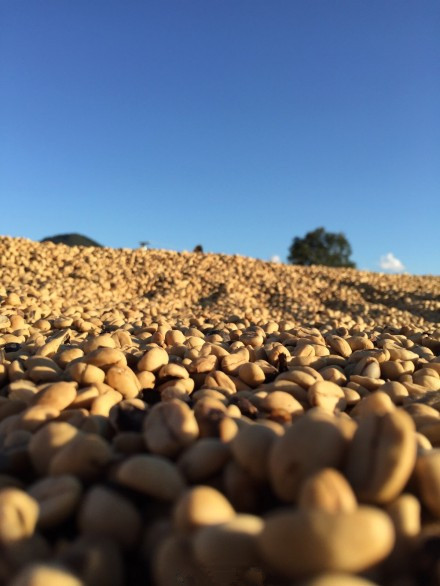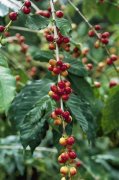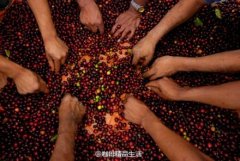The method of grading and classification of coffee beans
Coffee beans are graded first by size and then by density. With two exceptions, all coffee beans have a considerable size and the same proportion, with flat on one side and semi-oval on the other. The special cases are pea-shaped coffee beans that tend to be more oval in shape and giant coffee beans with large particles (that is, Marragol peel coffee beans). The prices of these two kinds of coffee beans are always higher.

Generally speaking, large coffee beans can produce better coffee. Coffee beans are usually graded on a scale of 10 to 20, but in some countries coffee beans are graded according to levels corresponding to a certain size, such as AA. The way to determine the size of coffee beans is to pass them through a sieve. But even so, there may be weight differences between coffee beans of the same size: and bad, crumpled coffee beans that have to be removed will still remain.
The best way to separate unwanted coffee beans from good ones is to use gravity and air. The compressed air method is operated manually and requires higher technology. it uses jets to separate heavy and light coffee beans. Another method, the weight separation separator, is to put the coffee beans on a raised plate and let the air pass through them to make the heavy coffee beans fall. This is also a technologically demanding method, if used properly, the coffee beans can be separated more accurately and effectively.
The next step is to sort these coffee beans. Remove rotten, black, sour and overfermented or unshelled coffee beans. This process depends on eyesight, putting the beans on a moving belt to check.
Other methods include the electronic color classification (mainly used for Robbaut coffee beans) and the dichromate (bichromatic) method, which uses light detection to find bad beans. Today, however, the best test classifier is still the human eye. But there is no doubt that high-tech microprocessing systems will eventually completely replace this process.
Coffee beans are graded in different countries according to different grading systems. Some of them, such as those commonly used in Haiti, are overly complex and ineffective, while the sorting devices used in Brazil, despite their complex structure, are indeed necessary. Overall, there are six export grades, the highest of which is SHB (strictly hardbean), or Highland Coffee beans, which are produced in highlands no less than 400m above sea level.
All coffee beans must be evaluated before they are purchased. The usual practice is to buy coffee beans for self-baking instead of roasting coffee beans that have already been roasted in the place of production. The main reason is that once the coffee beans are roasted, their shelf life will be short. The second reason is that most retailers in America and Europe like to buy coffee beans directly from local roasters so that they can better control the quality of their coffee.
Important Notice :
前街咖啡 FrontStreet Coffee has moved to new addredd:
FrontStreet Coffee Address: 315,Donghua East Road,GuangZhou
Tel:020 38364473
- Prev

Technology of high-quality coffee beans the processing process of coffee beans
After the wet treatment, the coffee beans are still preserved in the inner pericarp, which still contains about 15% water. The endocarp must be dried to a moisture content of about 11% to ensure that coffee beans are stored in a stable and safe environment. Water content is critical, because if Arabica beans are overdried to a moisture content of 10%, they will be lost
- Next

Selection technology of boutique coffee beans how to choose fresh coffee beans
The difference between the taste of large coffee beans and small coffee beans for the same kind of coffee, the bigger the beans are, the higher the grade is, the smaller the beans are, the lower the grades are, and the cheaper they are. Of course, there are differences in taste. The bigger the beans, the stronger the coffee. However, in addition to high-grade products, the classification of other coffee is not very strict, for example, the central grade beans can account for 60%. Then it's bigger than this level.
Related
- What is the meaning of lactic acid fermentation with coffee bean treatment?
- How to judge the state of foam by sound?
- How does the latte pull out the unicorn pattern? Come to get for a little trick to improve the flower pull!
- Will flower pulling affect the taste of the latte?
- Do you know the history of coffee?
- The difference between honey treatment and sun washing what is raisin honey treatment?
- What kind of milk can a novice use to make coffee foam to keep the foam longer? The correct method and skills of milking tutorial sharing
- Why do washed coffee beans taste sour? Flavor characteristics of washed Coffee
- Introduction to the skill of how to practice the size and height of water injection around the circle of hand-brewed coffee
- How do beginners practice coffee flower drawing from scratch?

